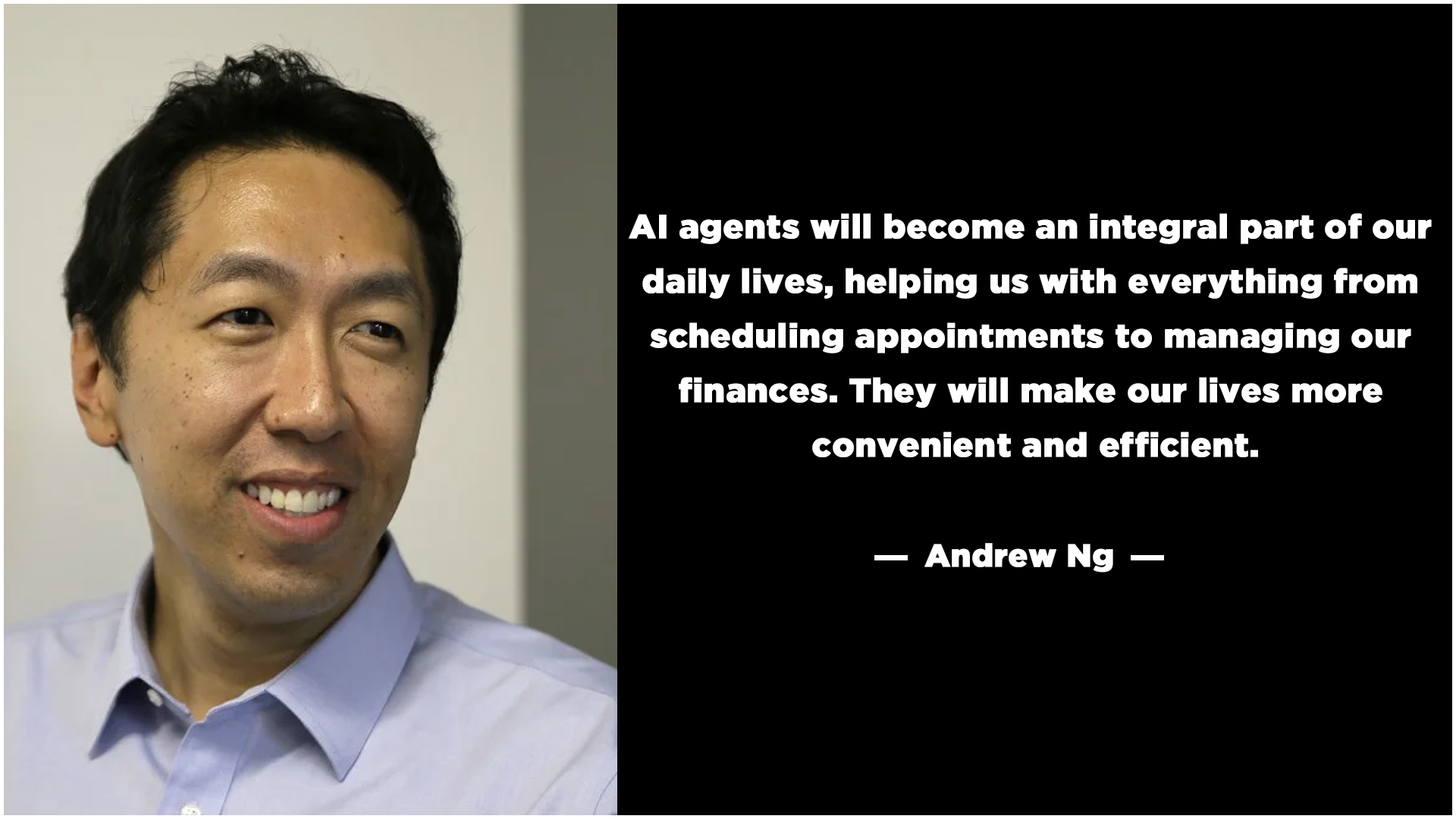Table of Contents
Introduction
AI agents are intelligent systems designed to perceive their environment, analyze data, and take actions to achieve specific goals. They range from simple automation tools to advanced learning systems capable of adapting over time.
Powered by AI and large language models (LLMs), AI Agents use machine learning, natural language processing, and computer vision to understand their environment, make quick decisions, and act with minimal human input—ideal for tasks requiring flexibility.
From real-time communication to task delegation, AI agents enhance efficiency and keep operations running smoothly with speed and precision.
Key Features of AI Agents
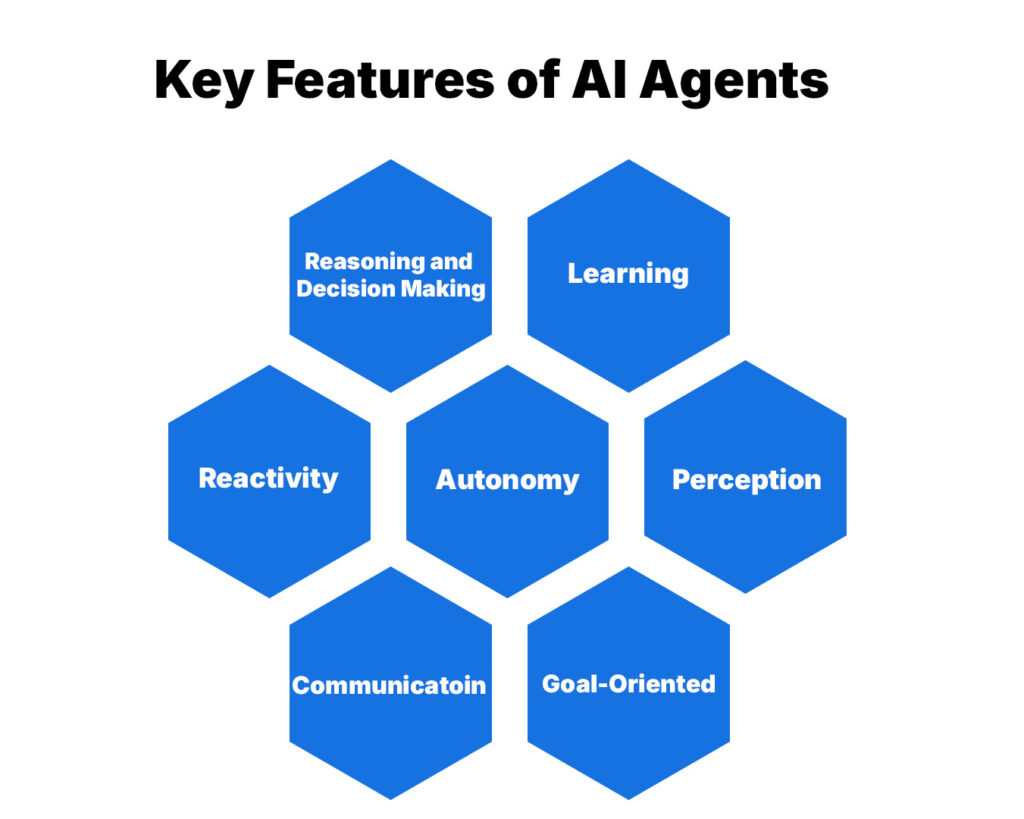
- Autonomy: AI virtual agents can carry out tasks independently, without the need for constant human guidance or input.
- Perception: These agents perceive and interpret their surroundings using various sensors, such as cameras and microphones, to understand their environment.
- Reactivity: AI agents evaluate environmental changes and respond appropriately to fulfill their objectives.
- Reasoning and Decision-Making: Equipped with advanced algorithms, AI agents analyze data, apply reasoning techniques, and make informed decisions to accomplish their goals.
- Learning: Through machine learning, deep learning, and reinforcement learning techniques, AI agents can adapt, improve, and enhance their performance over time.
- Communication: AI agents can interact with humans and other agents using various communication methods, including natural language understanding, speech recognition, and text-based messaging.
- Goal-Oriented: Designed to achieve specific objectives, AI agents can follow predefined goals or adapt and learn new goals based on their interactions with the environment.
AI Agent Architectures
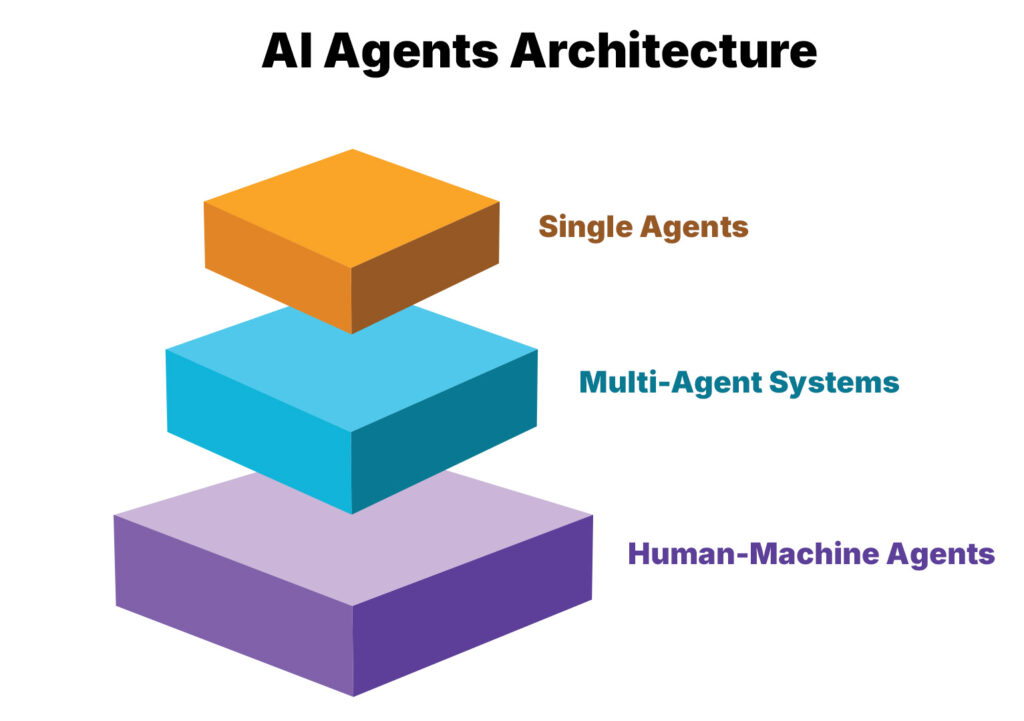
AI agents are autonomous systems that perceive their environment, make decisions, and execute actions to achieve goals. Their architectures vary based on operational scope and interaction models:
- Single Agents: These agents operate independently, handling specific tasks without collaboration. Examples include Siri and ChatGPT, which process user inputs to perform actions like setting reminders or answering questions.
- Multi-Agent Systems: These systems involve multiple AI agents working together to achieve shared objectives. For instance, autonomous vehicle fleets coordinate to optimize traffic flow and safety, demonstrating distributed problem-solving and collaboration.
- Human-Machine Agents: In this model, AI agents assist humans by handling data analysis, providing insights, or managing routine tasks. AI-powered customer support bots, for example, handle common inquiries, allowing human agents to focus on complex issues.
Types of AI Agents
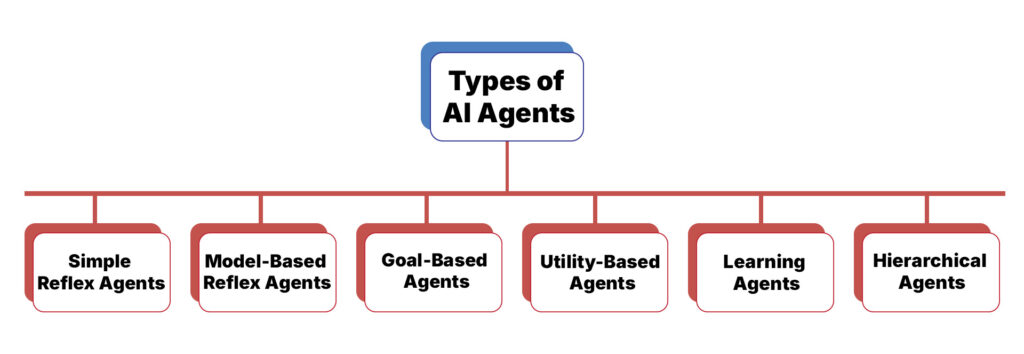
According to Andrew Ng, “AI agents will become an integral part of our daily lives, helping us with everything from scheduling appointments to managing our finances. They will make our lives more convenient and efficient.”
Andrew Yan-Tak Ng is a British-American computer scientist and technology entrepreneur focusing on machine learning and artificial intelligence (AI). Ng was a co-founder and head of Google Brain and was the former Chief Scientist at Baidu, building the company’s Artificial Intelligence Group into a team of several thousand people.
Organizations develop and implement various types of intelligent agents, each designed for specific tasks.
Below are some common types of AI Agents:
Simple Reflex Agents
Simple reflex agents operate based on predefined rules and immediate data input.
- They do not consider past experiences or future consequences, making them ideal for straightforward tasks that require minimal processing.
- For example, a simple reflex agent can be used for password resets by detecting specific keywords in a user’s conversation and triggering an automated response.
Model-Based Reflex Agents
Model-based agents build on the capabilities of simple reflex agents by incorporating an internal model of the environment.
- Instead of reacting solely to predefined rules, these agents analyze probable outcomes and consequences before making a decision
- By maintaining a representation of the world around them, they can handle more complex tasks with greater accuracy.
Goal-Based Agents
Goal-based agents, also known as rule-based agents, possess enhanced reasoning capabilities.
- They not only analyze environmental data but also compare different approaches to achieve a specific objective.
- By selecting the most efficient path, these agents are well-suited for complex applications such as natural language processing (NLP) and robotics.
Utility-Based Agents
Utility-based agents use advanced reasoning algorithms to maximize desired outcomes.
- They assess different scenarios and assign utility values or benefits to each option before selecting the most rewarding choice.
- For instance, a utility-based agent can help users find flight tickets with the shortest travel time, even if it means prioritizing efficiency over cost.
Learning Agents
Learning agents continuously improve their performance by learning from past experiences.
- They process sensory input and feedback mechanisms to refine their decision-making abilities over time.
- Additionally, they use problem generators to create new training tasks, allowing them to evolve and adapt to new challenges based on collected data.
Hierarchical Agents
Hierarchical agents function within a structured system where intelligent agents are arranged in tiers.
- Higher-level agents break down complex tasks into smaller, manageable components and delegate them to lower-level agents.
- Each agent operates independently and reports progress back to its supervisor. The higher-level agent then consolidates results and coordinates the system to ensure collective goal achievement.
Top Agentic AI Frameworks
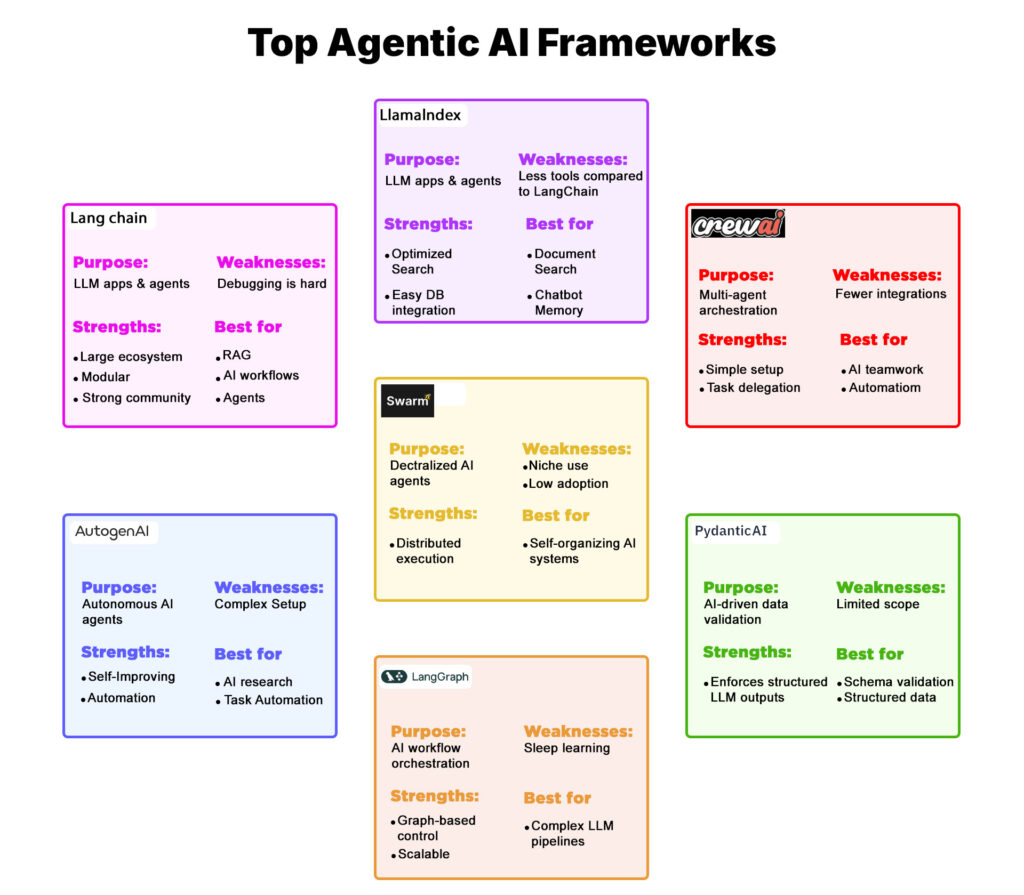
Agentic frameworks serve as the foundation for creating, deploying, and managing AI agents. These software platforms come equipped with essential features and functionalities that simplify and accelerate the development process.
LangChain
LangChain is an open-source framework designed for building LLM-powered applications, including chatbots like ChatGPT and advanced AI agents.
It features a modular architecture, where each module abstracts complex concepts and steps necessary for working with LLMs. These modules can be chained together to develop AI applications.
Key features include:
- Support for Vector Databases: Facilitates efficient data retrieval.
- Memory Utilities: Enables applications to retain history and context for improved interactions.
- LangSmith Platform: Provides tools for debugging, testing, and performance monitoring.
LlamaIndex
LlamaIndex is an open-source data orchestration framework for building generative AI (gen AI) and agentic AI solutions. It offers prepackaged agents, tools, and a workflow mechanism for developing multi-agent systems.
Key components of a LlamaIndex workflow:
- Steps: The fundamental actions executed by an agent.
- Events: Triggers that initiate steps and enable communication between them.
- Context: Shared data that steps can use to maintain state throughout the workflow.
Its event-driven architecture allows for asynchronous task execution, enabling flexible transitions and dynamic agent interactions. Unlike graph-based systems, pathways between steps aren’t predefined, making it well-suited for AI agents that require frequent looping or branching.
Swarm
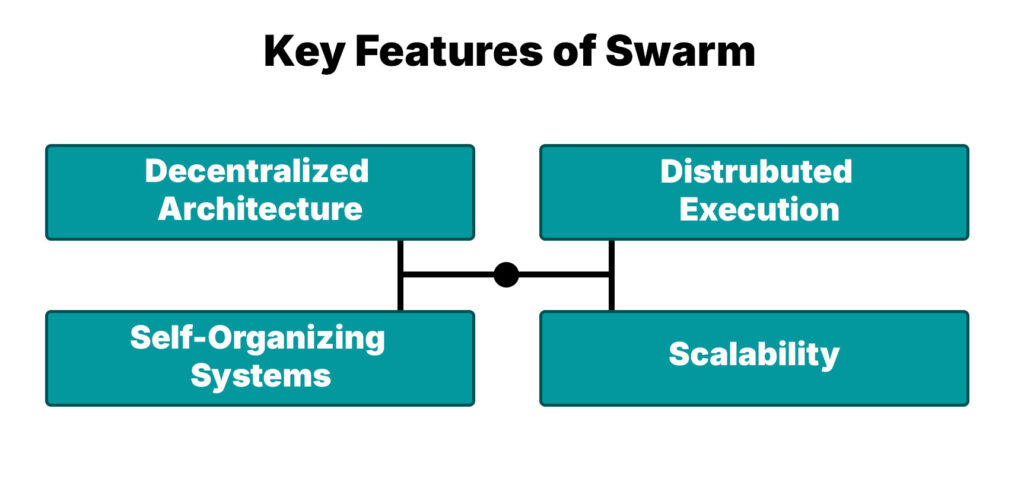
Swarm is a decentralized AI agent system designed for building self-organizing AI networks. It enables autonomous agents to interact, collaborate, and evolve within a distributed ecosystem.
Key Features
- Decentralized Architecture: Swarm operates without a central authority, ensuring data privacy and autonomy in agent interactions.
- Self-Organizing Systems: Agents can independently coordinate and adapt to new data, optimizing their behavior over time.
- Distributed Execution: Tasks are executed across multiple nodes, reducing single points of failure and enhancing efficiency.
- Scalability: The decentralized nature supports scaling, as new agents and nodes can join the network without disrupting operations.
CrewAI
CrewAI is an open-source orchestration framework designed for building multi-agent AI solutions, similar to AutoGen.
Its role-based architecture conceptualizes agentic AI as a “crew” of specialized “workers,” each collaborating to accomplish complex tasks.
Core Components of CrewAI
- Agents: Each agent is assigned a specialized role within the crew. Developers can define an agent’s role, goal, and backstory using natural language, enhancing clarity and purpose in workflows.
- Tasks: Tasks specify the responsibilities assigned to each agent. These can also be described using natural language, detailing the expected outcomes for every role.
PydanticAI
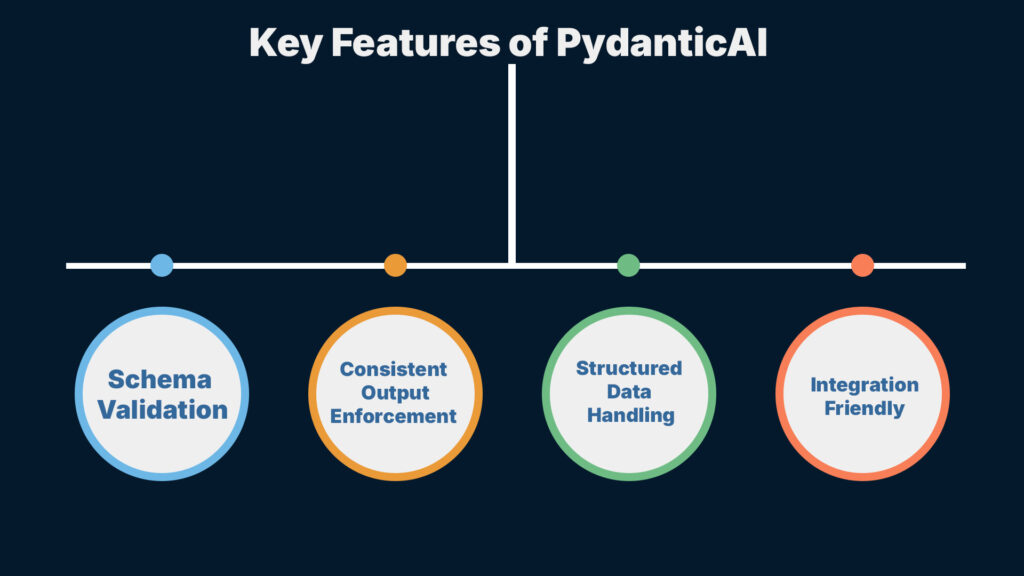
PydanticAI is a specialized framework for structured AI data validation and ensuring consistent outputs from large language models (LLMs). It leverages Pydantic’s powerful data validation tools to ensure that AI-generated data aligns with predefined schemas.
Key Features
- Schema Validation: Ensures that AI outputs adhere to specific data structures and types.
- Consistent Output Enforcement: Reduces unpredictability in LLM responses by validating and correcting output formats.
- Structured Data Handling: Ideal for applications that rely on clean, structured data, such as API responses and automated reports.
- Integration-Friendly: Easily integrates into Python-based AI projects, enhancing data reliability.
LangGraph
LangGraph is an extension within the LangChain ecosystem, specialized for orchestrating complex, multi-agent workflows.
It utilizes a graph architecture where:
- Nodes represent specific actions or tasks of AI agents.
- Edges define the transitions between these tasks.
- A state component maintains the task list across all interactions, enabling cyclical, conditional, or nonlinear workflows.
AutoGenAI
AutoGen, developed by Microsoft, is an open-source framework for creating multi-agent AI applications capable of performing complex tasks. Its architecture consists of three core layers:
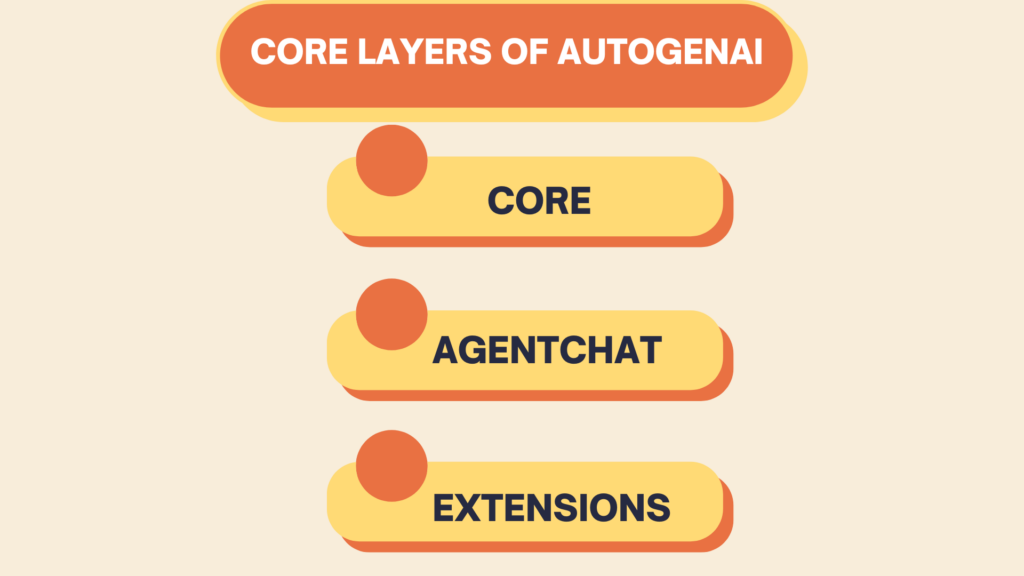
- Core: The foundational programming framework supporting scalable, distributed agent networks. It enables asynchronous messaging and provides tracing and debugging tools for agent workflows.
- AgentChat: Built on Core, this layer is ideal for developing conversational AI assistants. It comes with default agents and predefined interaction patterns, making it a good starting point for beginners.
- Extensions: This package includes components to expand Core and AgentChat capabilities, supporting integration with external libraries and services. Users can leverage built-in extensions, community contributions, or create custom solutions.
Case studies and Applications of AI Agents
Oracle: Miracle Agent
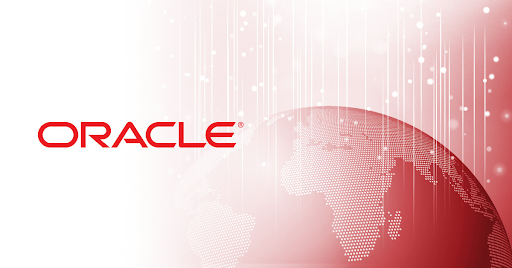
Oracle’s Miracle Agent is set to roll out with Fusion Cloud updates in 2025. It is part of Oracle’s extensive AI suite, automating processes in finance, HR, supply chain management, and customer service. The agent captures data from vendor quotes, translates it, and generates purchase requests, streamlining operations end-to-end.
ChatGPT: OpenAI's Versatile AI Agent

OpenAI’s ChatGPT continues to evolve as a powerful AI agent, widely utilized for a range of tasks including content creation, coding assistance, research, and business automation.
- Its ability to understand and process natural language inputs allows it to serve as a virtual assistant, aiding users with brainstorming, drafting, editing, and even complex problem-solving.
- With ongoing advancements in multimodal capabilities, ChatGPT is becoming an increasingly versatile agent for both individual and enterprise-level solutions.
Microsoft: Advancing Efficiency with AI Agents

In 2025, Microsoft is revolutionizing workplace efficiency with advanced AI agents. Through Copilot Vision in Dynamics 365, Microsoft introduced autonomous AI features across sales, service, finance, and supply chains. The Copilot Studio enables users to design custom AI agents, enhancing business automation.
Key Integrations:
- Customer Support: AI agents manage inquiries, schedule meetings, and analyze trends.
- Sales & Finance: Automate lead processing and financial record management.
- Supply Chains: Optimize supplier selection and logistics planning.
Nvidia: Leading AI Hardware Innovation
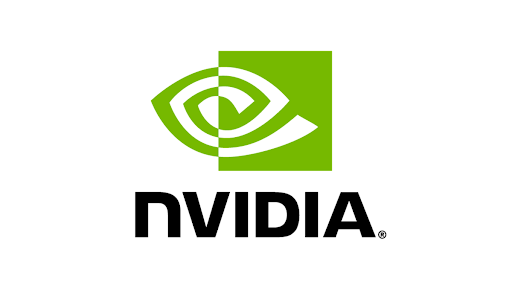
Nvidia is driving AI advancements with cutting-edge hardware and development tools.
- Project Digits: Launching in May 2025, this compact AI supercomputer allows users to train and deploy large models (up to 200 billion parameters) for just $3,000.
- Agentic AI Blueprints: Provide structured guides for developing AI agents in automation, speech recognition, and report generation. Collaborations with CrewAI and LangChain enhance real-world applications.
- Eureka: Utilizes GPT-4 to teach robots complex tasks, showcasing advanced AI learning in robotics.
These innovations position Nvidia at the forefront of AI hardware and agent development.
Google: Transforming Task Automation with AI

Google is reshaping task automation by embedding AI across its platforms.
- AI Overviews: Synthesizes search results for concise, direct answers.
- Project Astra: A multimodal AI system for real-time data processing, designed for AR applications.
- Gemini Deep Research: Automates research report generation, simplifying complex data compilation.
- Project Mariner: Enables AI to autonomously navigate and extract data from websites.
These initiatives aim to streamline information retrieval and redefine digital experiences.
Salesforce: Elevating Business Processes with AI Agents

Salesforce is optimizing business operations with Agentforce, introduced in October 2024. This platform enables autonomous AI agents to handle tasks like customer support, lead qualification, and marketing optimization.
Key Trends:
- Multi-Agent Systems: Enhance collaboration for complex, multi-step tasks.
- Personalized Interactions: AI agents deliver tailored experiences based on customer data, boosting satisfaction and loyalty.
These developments position Salesforce as a leader in AI-driven business process transformation.
SAP: Innovating with Joule Collaborative AI Agents
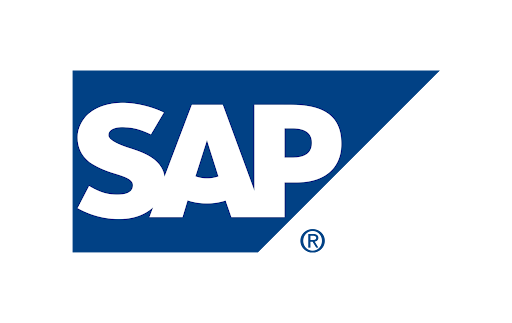
SAP’s Joule Collaborative AI Agents automate enterprise workflows, enhance decision-making, and streamline operations across platforms like SAP S/4HANA and SuccessFactors.
Core Features:
- Automate tasks like invoice processing and procurement approvals.
- Deliver real-time, AI-driven insights.
- Enable intuitive interactions through natural language processing.
- Adapt and learn for continuous efficiency improvements.
Joule AI Agents empower businesses to increase productivity, reduce costs, and enhance agility across operations.
Applications of AI Agents

- Healthcare: AI assists in diagnostics, drug discovery, and patient care, improving accuracy and efficiency in medical treatments.
- Autonomous Vehicles: Self-driving cars use AI for real-time navigation, traffic management, and predictive maintenance, improving road safety.
- Manufacturing & Robotics: AI optimizes production lines, predictive maintenance, and robotic automation, reducing costs and increasing efficiency.
- Education & E-Learning: AI enables personalized learning, automated grading, and intelligent tutoring, transforming education.
- Cybersecurity: AI enhances security with real-time threat detection, automated responses, and biometric verification to prevent cyberattacks.
- Marketing & Advertising: AI-driven insights power personalized content, predictive analytics, and AI chatbots for better engagement.
Future of AI Agents
AI agents are on a trajectory toward becoming more autonomous and capable, with advancements in natural language processing (NLP) making them increasingly intuitive and adaptable across industries
As these agents gain the ability to make complex decisions independently, we can expect them to transform workflows in sectors ranging from customer service to logistics, automating complex processes from end to end and creating new opportunities for efficiency and innovation.
Conclusion
AI agents are transforming the way businesses and individuals operate, offering unprecedented levels of automation, efficiency, and intelligence. Companies like Microsoft, Nvidia, and Google are pioneering AI solutions that enhance decision-making, automate complex workflows, and drive technological progress.
Embracing these advancements will not only improve operational efficiency but also provide a competitive edge in the rapidly advancing digital landscape. The future of AI agents promises smarter, more adaptive systems that will empower businesses and individuals to achieve greater outcomes with less effort.
Deepak Wadhwani has over 20 years experience in software/wireless technologies. He has worked with Fortune 500 companies including Intuit, ESRI, Qualcomm, Sprint, Verizon, Vodafone, Nortel, Microsoft and Oracle in over 60 countries. Deepak has worked on Internet marketing projects in San Diego, Los Angeles, Orange Country, Denver, Nashville, Kansas City, New York, San Francisco and Huntsville. Deepak has been a founder of technology Startups for one of the first Cityguides, yellow pages online and web based enterprise solutions. He is an internet marketing and technology expert & co-founder for a San Diego Internet marketing company.

